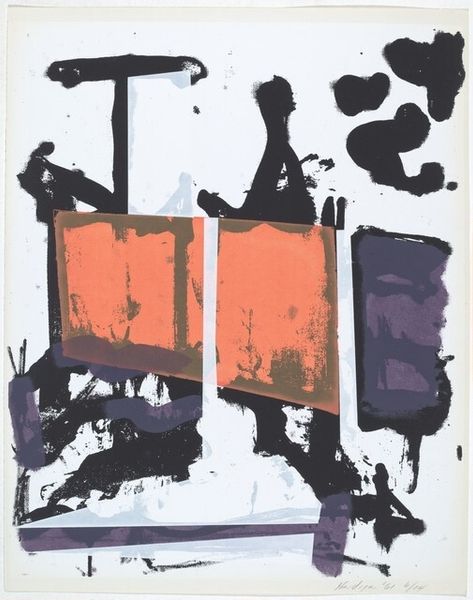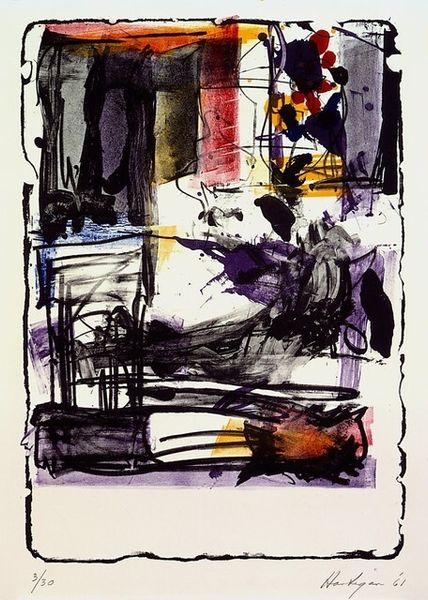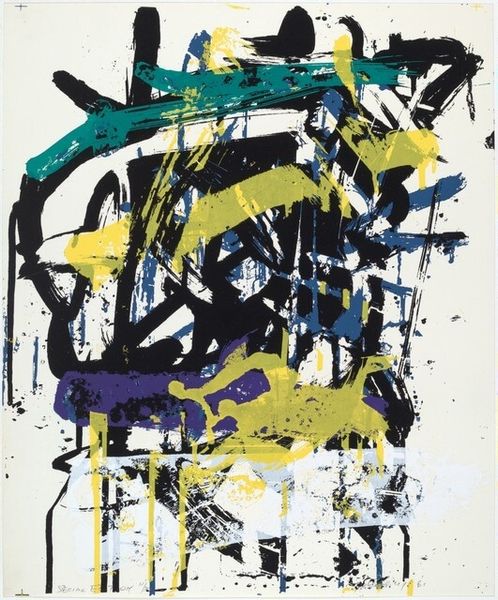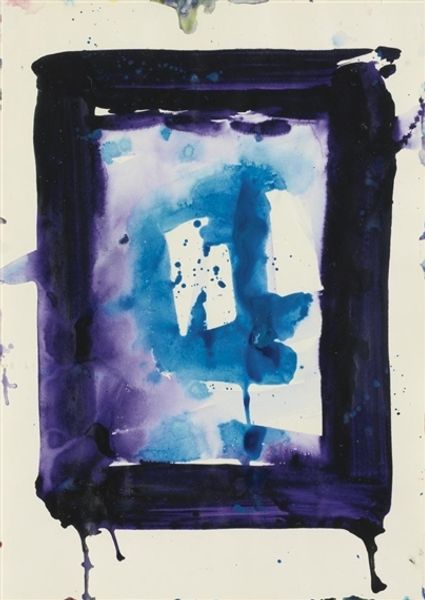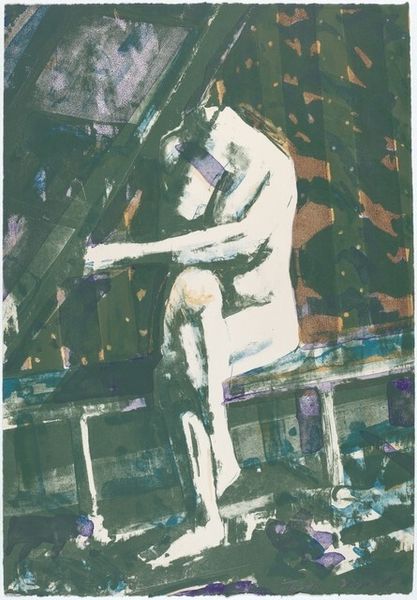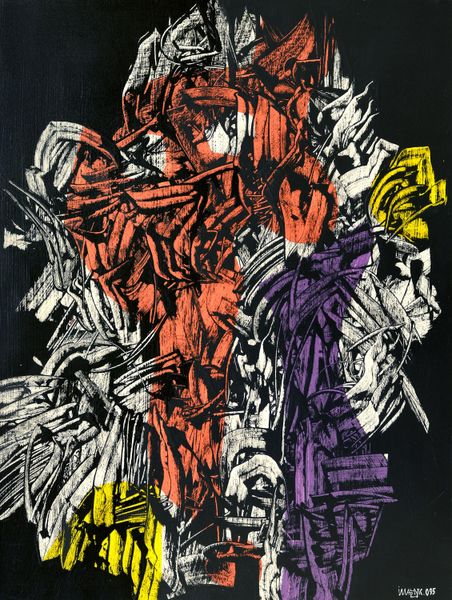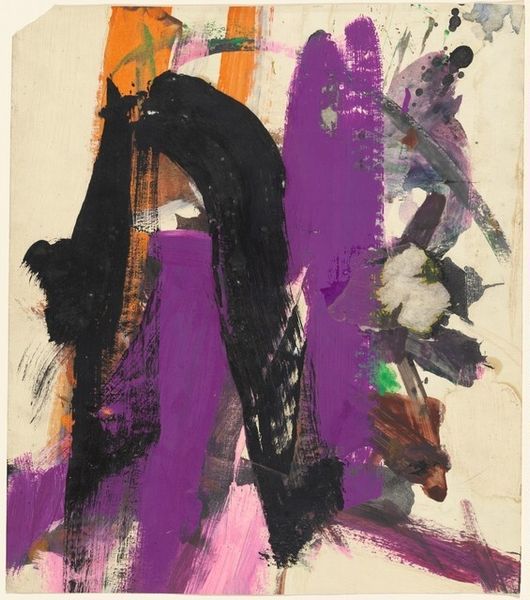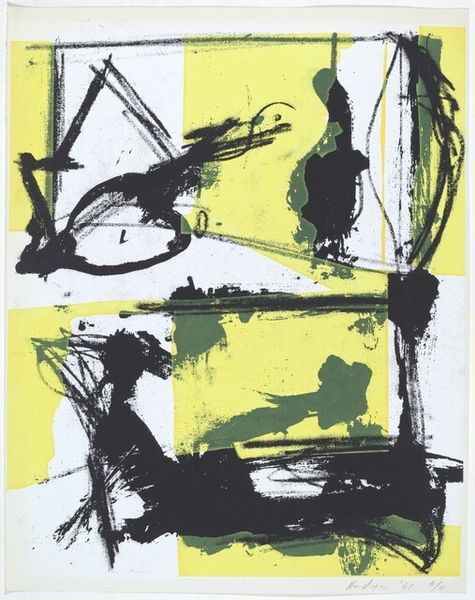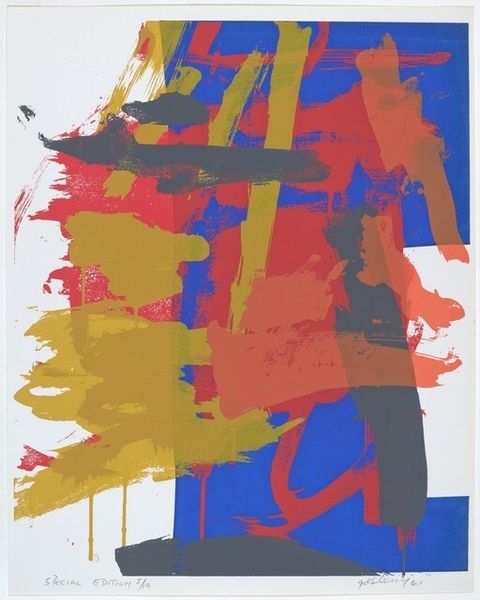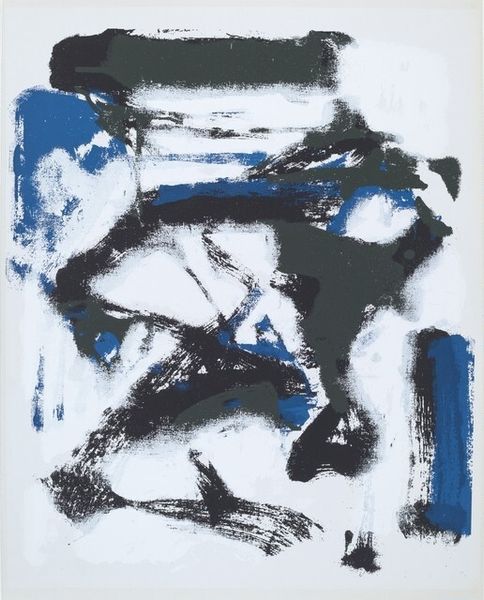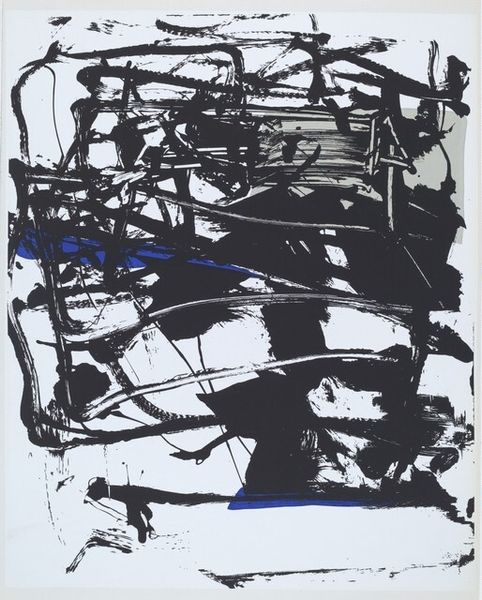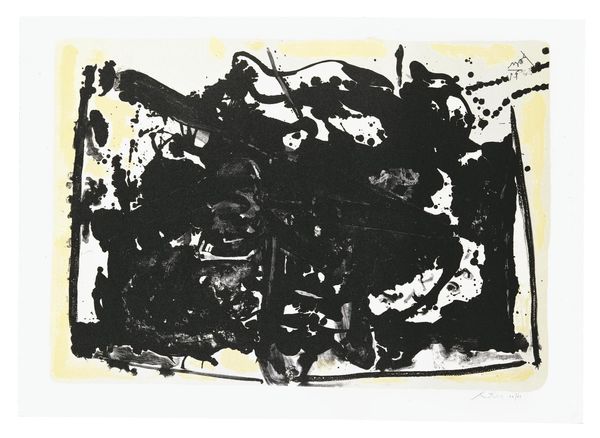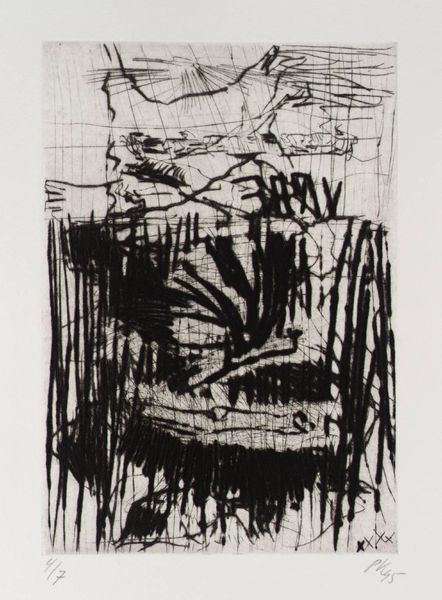
print, monoprint
#
abstract-expressionism
#
abstract expressionism
#
abstract painting
# print
#
pop art
#
monoprint
#
geometric-abstraction
#
abstract-art
#
abstract art
Dimensions: sheet: 46 x 37.2 cm (18 1/8 x 14 5/8 in.)
Copyright: National Gallery of Art: CC0 1.0
Curator: This is "On a Tar Roof," a 1961 monoprint by Grace Hartigan. I'm curious, what are your first thoughts about it? Editor: My first thought is raw energy. It’s all colliding forms and that intense purple background! It makes me wonder what kind of societal tensions are reflected in it. Curator: Absolutely, that energy! It is evocative of a cityscape viewed abstractly, filtered through memory and perhaps anxiety. Monoprint allows for this very immediacy. What elements here speak most directly to those tensions for you? Editor: Definitely the angular shapes, haphazardly layered as if everything's under construction, maybe demolition. And those swathes of black—oppression, erasure? You said it's from '61, a very turbulent time, so many political anxieties are at play. I wonder, what does a "tar roof" symbolize to you? Curator: The roof as a transitional place, above and apart from the structures of everyday life, that suggests new possibilities, a different perspective from which to see things, almost like the alchemist's laboratory, but grounded with the practical presence of tar. Look at the way the forms mimic architectural details but ultimately resist clear identification, creating ambiguous shapes with that central cluster of black marks dominating the entire picture plane. It seems significant. Editor: It’s that ambiguity I find compelling too, the refusal to settle on a single narrative. This reflects an America grappling with change, challenging the existing structures even as it builds new ones—or attempts to. Curator: I agree, that resistance feels very intentional. Hartigan is disrupting any easy readings here. The symbolism resides less in recognizable objects and more in the dynamic relationships between these almost calligraphic forms. They seem engaged in conversation or conflict. Editor: Or maybe, and perhaps I’m pushing it here, the visual representation of a suppressed collective voice, desperately wanting to speak but unsure what shape to take. I like that so many layers of analysis emerge from a print that initially feels chaotic. Curator: That tension—between intention and chaos, representation and abstraction—really encapsulates Hartigan's practice, doesn't it? It’s about that restless energy searching for new forms of expression in a world in constant flux. Editor: Absolutely, and how fitting that an abstract artwork created sixty years ago can ignite such vibrant and relevant discussions about social dynamics today.
Comments
No comments
Be the first to comment and join the conversation on the ultimate creative platform.
